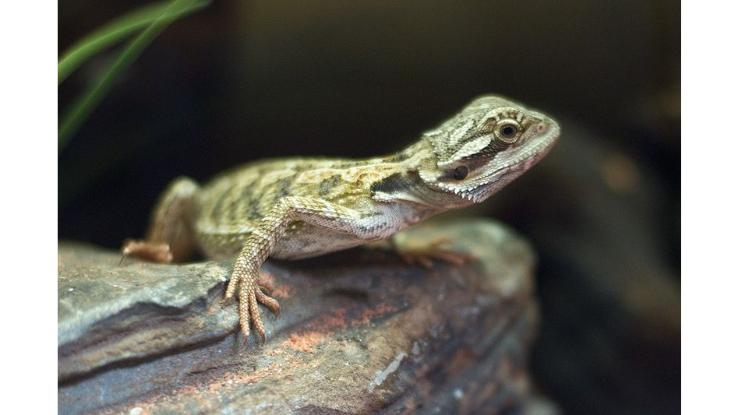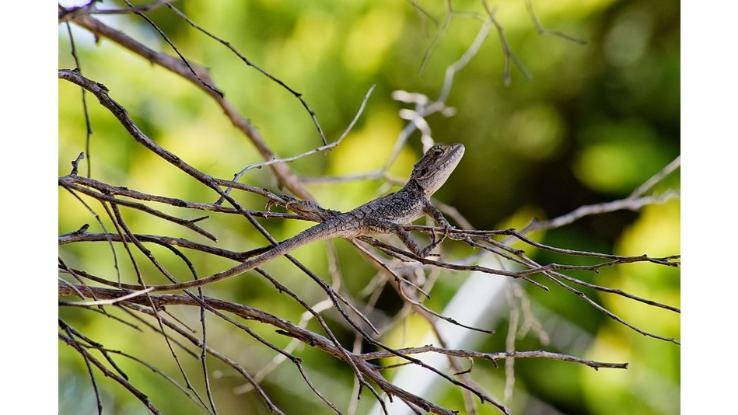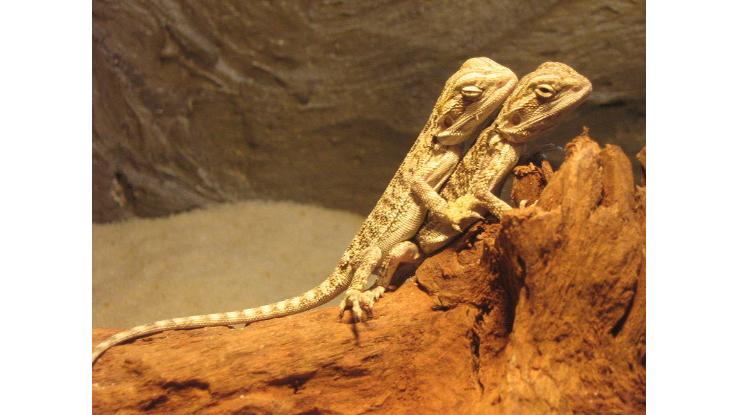How to Draw a Cute Baby Dragon Step by Step Easy
Bearded dragons are, arguably, the most popular pet reptile available. They're in most large pet stores, have nearly 20 different morphs available at reptile shows, and have personalities that most people love. When taking care of a baby bearded dragon, however, it's important to realize that their care requirements are different from that of the adults in the species.
Should you be considering a baby bearded dragon as your next pet, take into account the specific needs that they have before making your purchase. This can help you determine if a baby beardie is right for you or if you should seek an adult to start with.
Bearded Dragons at a Glance
Bearded dragons are rather large lizards native to Australia. They've become one of the more popular reptiles to keep as pets, and there are a large number of captive-bred bearded dragons available at any given time. The most common species of bearded dragon sold is Pogona vitticeps, known for its calm demeanor. It's one of the larger bearded dragon species, reaching up to 24 inches in length.
These lizards are largely omnivorous and enjoy insects as well as fruits and vegetables in captivity. Most bearded dragons will live ten to 15 years easily, with some bearded dragons living up to 20 years if taken care of properly.

One of the most important parts of keeping a bearded dragon is picking a healthy baby, to begin with. Healthier bearded dragon babies have a higher likelihood of avoiding any major health issues as they age. Additionally, when in good health, the entire care process for baby bearded dragons is made much easier. You always want to start out on the right foot.
When selecting a baby bearded dragon, keep in mind the following checklist to make sure you're getting off to the best start with your new pet:
- Look for a bearded dragon that is the result of captive breeding. Captive-bred bearded dragons are easier to care for than wild-caught bearded dragons, and this is especially true of babies.
- Baby bearded dragons should be highly active. They're mobile animals and like to roam their enclosure. Healthy baby bearded dragons have an energetic disposition.
- The healthiest examples look highly alert, with eyes that move and are attentive to their surroundings. Nose vents should also be clear of any shed, and be clean.
- Well-fed baby bearded dragons tend to be healthier than others. A baby bearded dragon with a slightly rounded stomach has most likely been well-fed and is growing well.
In most cases, it's not a good idea to pick the runt of the clutch, as they tend to have the most problems regarding feeding and growth. Most reputable breeders will identify these lizards and set them aside from a social setting, making sure that they're taken care of.
Additionally, a breeder that demonstrates good knowledge of bearded dragons won't sell babies that aren't thriving, as it's typically a downhill battle, and will wait to get over the "hump" before selling babies. This "hump" is about four weeks, and baby bearded dragons that are healthy up to that point tend to thrive as they age.
Setting Up an Enclosure
The enclosure may be the hardest part of keeping a baby bearded dragon, but everything you need to know to keep your pet healthy is listed below.
Size
Baby bearded dragons need an enclosure that's at least 20 gallons in size. It's important to keep in mind, however, that baby bearded dragons grow very quickly. Within a few months of purchasing a 20-gallon enclosure, your baby bearded dragon will have outgrown it.
It's also difficult to keep baby bearded dragons in larger enclosures, as well, though. They can have issues with catching their prey if a tank is too large, which can become a problem.
One solution to this is purchasing an enclosure that is appropriately sized for an adult bearded dragon, normally somewhere around 125 gallons, and partitioning it using barriers. Then, as the baby bearded dragon grows, more access to the enclosure can be granted. It's also a good way to avoid stressing the baby bearded dragon out by moving them to new enclosures as they age.
Substrate
Substrate is a hot topic when it comes to bearded dragon enclosures, especially when housing younger bearded dragons. Although wild bearded dragons will encounter sand, it is not the best substrate for bearded dragons as it can be ingested and cause digestive blockages, which can be fatal.
Instead, the easiest solution is to use newspaper or paper towels. Newspaper and paper towels will need to be changed daily. Reptile carpet should be avoided in general due to its ability to catch and rip reptile nails.
Hides and Decor

As with any other reptile, baby bearded dragons should be provided a hide or two in their enclosure, as well as some decor to make them feel more at home. Smooth driftwood can act as a good climbing obstacle as well as a basking perch, while plastic plants make for a more natural-looking environment that they can enjoy.
Heating and Light Setups
Bearded dragons come from a very warm, sunny environment, and as such, need basking lights as well as full-spectrum lights. Basking lights need to be set up above a basking perch, about six to eight inches from the perch's surface. This helps the perch reach the optimal temperature of 110 degrees Fahrenheit for the baby bearded dragon. As they grow, the temperature can be gradually reduced to 95 degrees.
Full-spectrum lighting constitutes special lights that provide UVA and UVB spectrums of light. These light spectrums help bearded dragons synthesize calcium and vitamin D3, ensuring that they stay healthy. Full-spectrum lights need to be changed every six months, even if they appear to be working, as they may stop being effective after a certain time. Remember that red lights can cause blindness.
Food and Water
Diet is one of the hardest things to get right for baby bearded dragons, as there are many guides to bearded dragons online that don't specifically differentiate the difference between babies and adults. Baby bearded dragons have the opposite diet of adult bearded dragons. A baby bearded dragon's diet should consist of around 80% insects and 20% greens, whereas an adult will eat more greens than insects.
Baby bearded dragons should be fed as many insects as they can eat in a ten to 15 minute period three to four times a day. Insects should consist of crickets and Dubia roaches that are no larger than the distance between your bearded dragon's eyes. Once 15 minutes have elapsed, remove any remaining insects from the enclosure. It's also important to dust these insects with a calcium supplement and multivitamin supplement on a daily basis to give them the best nutrition possible.
Dark leafy greens, like collards, dandelion, and curly kale, should be fed to baby bearded dragons on a daily basis. Make sure that the greens are chopped into smaller size pieces to prevent any choking on the food. As the bearded dragon grows older, their diet will consist more of these greens than it does insects.
While a baby bearded dragon in the wild won't encounter much moisture, in captivity it's recommended to provide a water dish to them. This dish should be heavy to keep it from being tipped over. It should also be shallow, so as to prevent any accidents from happening when the baby bearded dragon climbs into it. Fresh water should be given every other day, and the dish itself should be cleaned thoroughly once a week.
Handling

Bearded dragons have a reputation for being a very hands-on pet reptile. This ability to be handled starts when they're babies, but caution must be used. Baby bearded dragons are fragile and could be easily injured if held too tightly or dropped.
When beginning to handle your baby bearded dragon, it's recommended to allow them to adjust to their surroundings first. After they've settled in and their behavior seems to be more normal than when they were first housed, light handling can begin.
Handling needs to start slow and should be done no more than once a day, to begin with. When starting out, gently place the baby bearded dragon in your palm close to the ground of their enclosure, and let them relax there. After doing this for a week to two weeks, they'll generally understand that humans mean no harm and will be tolerant of handling. This leads to hand-feeding and longer handling sessions.
Bringing Up Baby
Baby bearded dragons are a commonly available pet but differ in their needs from adult bearded dragons. Understanding their needs as babies is important to them living a healthy life and growing into healthy adults. If adequately prepared, caring for baby bearded dragons is an easy task, and most beginning reptile keepers can handle it.
SOURCES:
Caring for Baby Bearded Dragons: The Ultimate Beginner's Guide | Reptile Advisor
Care Sheet for a Baby Bearded Dragon | My Bearded Dragons
Why Are Red Bulbs Bad For My Bearded Dragon? | Fluffy Planet
Source: https://www.reference.com/pets-animals/baby-bearded-dragon?utm_content=params%3Ao%3D740005%26ad%3DdirN%26qo%3DserpIndex&ueid=c3aa5428-7fb1-4a3b-8f82-8dfb2580d0d7
0 Response to "How to Draw a Cute Baby Dragon Step by Step Easy"
Post a Comment